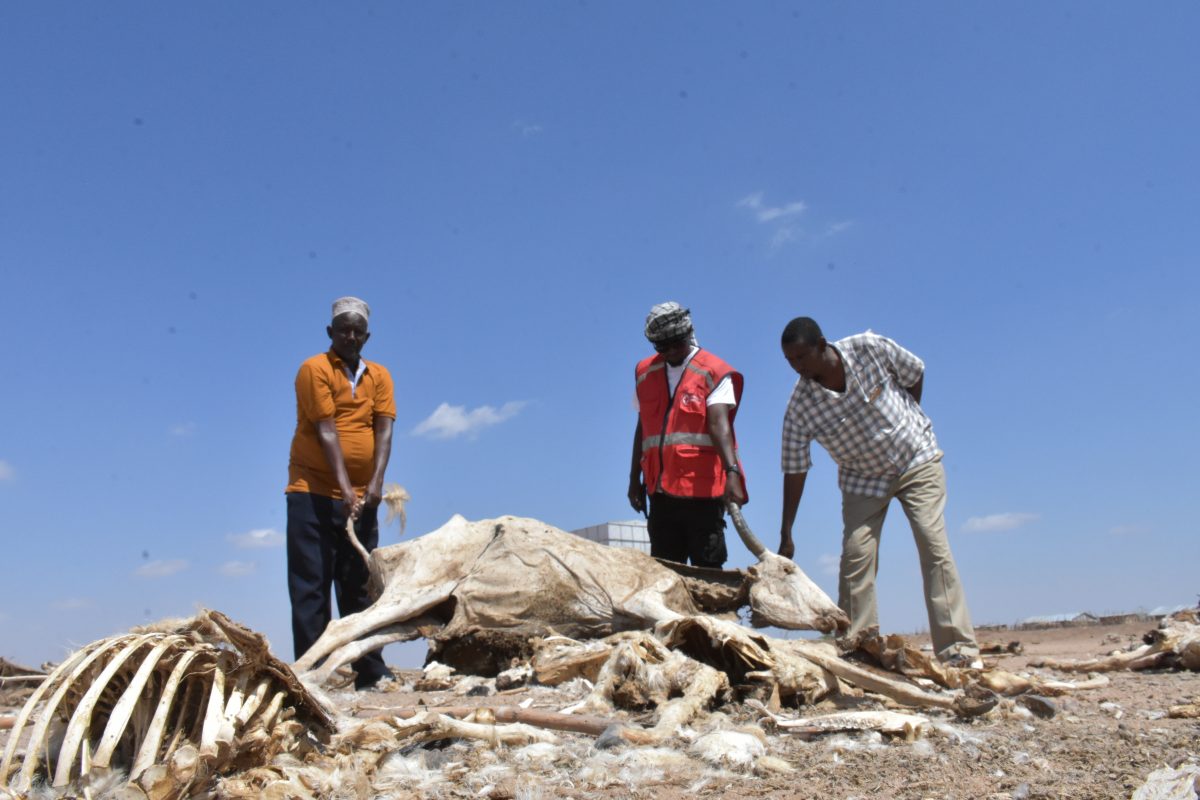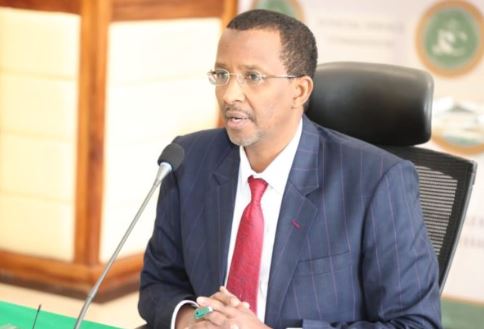Impact of climate change, beyond water shortage

In the dusty village of Meldanyi, Kajiado Central, boys slowly walk their cows to a water point under the scorching sun. The community water point is the only place where the residents who are mainly pastoralists can access water for their animals as all the rivers and streams have dried up.
As they walk, one can easily tell these young ones have not had a good meal for days due to scarcity of food and water caused by the ongoing prolonged drought.
The drought has been termed as the worst to have hit the region in the last 40 years.
National Drought Management Authority (NDMA) says that by December 2022, at least 4.35 million people were facing hunger and were in dire need of humanitarian assistance.
While drought is the main climate change hazard Kenya is currently facing, the impact trickles down to health as experts express fears for major setback on gains made on health issues.
Mzee James Masanga, a father of five says getting food for his family has been a major challenge due to lack of money after losing almost all the livestock he owned. “I no longer have cows to sell. We sometimes go for two days without food and on lucky days, its only one meal,” he says.
Masanga notes as a result, diseases have been part of his family especially diarrhoea due to lack of clean water. “I cannot do heavy work as I used to do because of the diseases that I have been contracting. My children are also malnourished,” he says.
Henry Ng’ethe, the chairperson for the Nutrition Association of Kenya says drought is just part of the larger impact of climate change.
Ng’ethe says global warming comes with either drought which brings with it an array of other problems. “For the current situation, drought means there is no clean water for consumption meaning they will use whatever is available even if its dirty water or food. That is likely to come with water-borne diseases while lack of nutritious foods means under-nutrition especially among children, pregnant women and the elderly,” he says.
Ng’ethe says under-nutrition among pregnant women could lead to the birth of under-developed infants which could lead to non-communicable diseases in future while minors suffer stunting. “Adults can suffer kwashiokor, marasmus and for teenagers, it can result to impaired immunity. This results to a huge burden of health care and that is the really impact of climate change on health,” Ng’ethe says.
Health assessment
He adds that stakeholders should see the crisis past lack of rains and evaluate the real effects on the people, which will then push for implementation of key adaptation measures. “The effects of climate change will derail the gains we have made on health as a nation and that is why it’s important to push for adaptation measures like growing of drought resistance crops among others,” he noted.
A 2021 report on climate change impacts on Kenya’s health assessment by International Federation of Red Cross and Red Crescent societies had warned of increased temperatures over in most of the regions.
The report further predicted a heat-related deaths especially on elderly and those living in the urban areas due to increased temperatures as well as air pollution.
The report also warned of possibilities of an increase of respiratory health and chronic diseases, acute lower respiratory infections in children, stroke, lung cancer, obstructive pulmonary disease which are highly attributed to household air pollution and greenhouse emissions.
The report went further to show a rise and geographic expansion of climate sensitive vector-borne diseases such as chikungunya, dengue fever, malaria, Rift Valley fever and yellow fever which pose significant health effects and are highly triggered by changing climatic conditions.
Research shows vector-borne disease such as malaria which causes the largest burden in Kenya is endemic in Coastal, Western and Nyanza regions and with climate change, the disease is likely to expand to new areas and increase frequency of outbreaks.
Other diseases that Kenyans are prone to due to climate change include measles, meningitis, diarrhoea, cholera as well as diseases caused by under nutrition especially in children under the age of five years, women mostly in poor communities.
Already, the Kenya Medical Research Institute (Kemri) has discovered a new malaria-causing mosquito in Kenya.
The institution and the Ministry of Health reveals that the mosquito, anopheles stephensi was discovered in Laisamis and Saku sub-counties of Marsabit County in Northern region of Kenya.
The species was first discovered in Djibouti and later in Sudan, Somalia and Nigeria.
Urban areas
Dr Eric Ochomo from KEMRI says with the new species, cases of Malaria are expected to go higher especially in areas not endemic.
The Coastal region and regions along Lake Basin have been the endemic to mosquito caused diseases. “With this mosquito which bites while outside the house, Malaria is likely to go high especially in urban areas because the mosquito does not have animals to bite therefore will turn on human beings,” he says.
And with the effects of climate change already being felt in Kenya, Ochomo says vector-borne disease are likely to rise especially in areas which are naturally not affected by malaria and other diseases.
“Mosquitos thrive in areas with temperatures above 25 degrees and majority of areas like Nairobi are currently experiencing these temperatures and therefore are conducive for breeding of malaria-causing mosquitos and other diseases,” he says.
Martin Muchangi, a water and sanitation specialist at Amref Health Africa says health is one of the issues greatly impacted by global warming. Muchangi says the crisis has become a major cause of mortality of around 150,000 people per annum as a result of these extreme weather conditions.
“If nothing is going to be done to reverse the climate change trends, the number is likely to go higher than 250,000 deaths by 2030.These deaths are likely to be caused by increased malnutrition, diseases like malaria, diarrhoea, heat stress and other diseases that come with either floods or drought,” he warns.
WHO estimates the cost of climate change on health will hit its highest of about USD 2-4 billion by 2030,which poses a major challenge to realisation of universal health coverage.
Muchangi says countries like Kenya are likely to be affected more due to the vulnerability and lack of resources to adopt the impacts of the global crisis.
The expert says the investments by the government and even the private sector into adoption and mitigation of this crisis is still dismal and much needs to be done.












